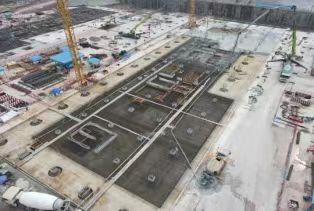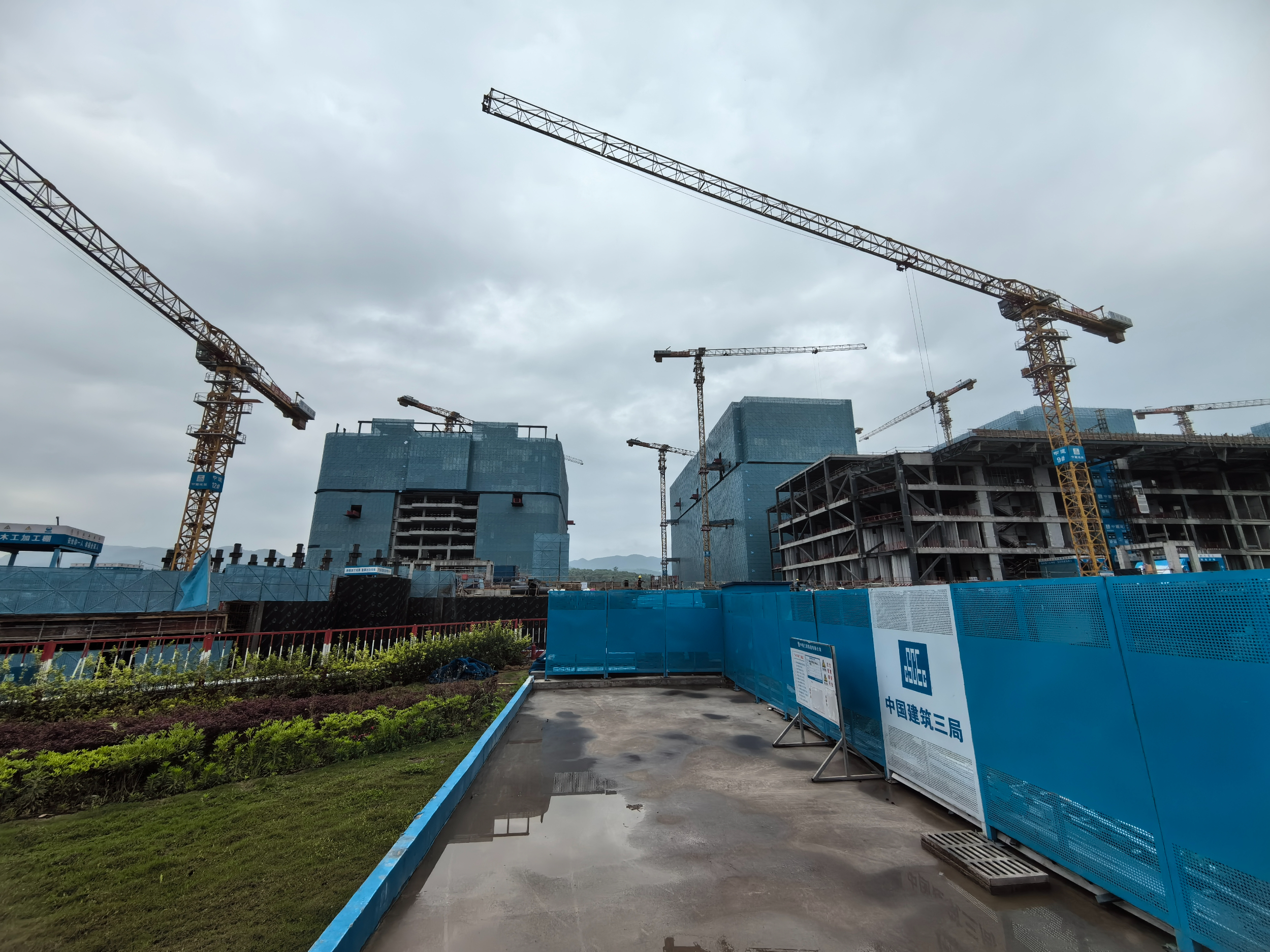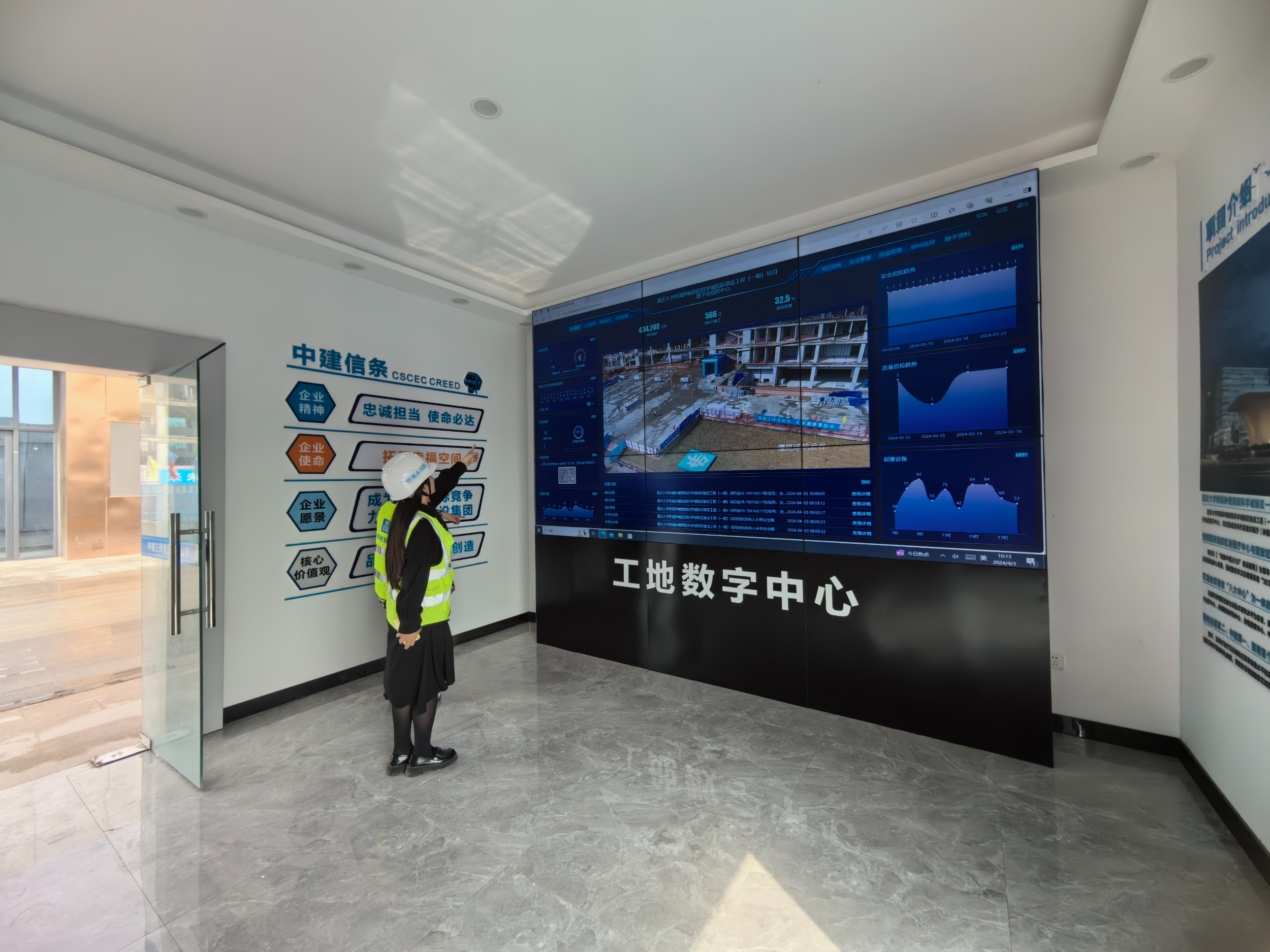What is the "black technology" of Chongqing's intelligent construction?
The common foundation forms in engineering construction include single foundation, pile foundation and raft foundation, etc., the raft slab is the concrete slab, the foundation is under the slab, and there are columns and walls on the slab. The construction method of intermittent pouring is routinely used for the construction and pouring of ultra-long raft slabs to control the quality problems such as cracks caused by the change of the volume of the concrete itself, which is time-consuming and polluting. In the construction of the ultra-long raft foundation with a length of more than 130 meters and a thickness of 2 meters, the concrete performance has been improved through exploration and research, and the continuous overall pouring construction technology of the ultra-long raft has been realized, which not only saves the construction period, but also reduces the carbon emissions and dust pollution in the construction process, which has attracted the attention of industry experts and scholars.
"Due to the special geographical location, the three inpatient buildings of the project are all built with ultra-long raft foundations, and the team improved their performance through concrete tests, applying a high-performance magnesia expansion agent, which can effectively and continuously compensate for the volume deformation of raft concrete and avoid quality problems such as cracks." Tan Yuan, the project manager, told reporters that through scientific and technological research in construction technology, they finally realized the continuous overall pouring construction of three ultra-long raft structures, and poured about 24,000 cubic meters of concrete in 10 days, saving 60 days of construction time.
According to the calculation of material and energy consumption, compared with the traditional batch pouring construction technology, the continuous overall pouring construction process of ultra-long raft reduces the input of machinery and equipment, reduces material consumption by 5%, reduces energy consumption by 20%, and reduces overall carbon emissions by 30%.

The picture shows an extra-long raft. Photo courtesy of the Southwest Company of China Construction Third Bureau

In addition, the construction of the main structure of the project also adopts the disc buckle support system, using the large moment pipe instead of the steel pipe as the main keel, and the joist instead of the beam bottom pole as the beam bottom bracing to form a large spacing supporting moment combined with the disc buckle support system, and the spacing of the disc buckle support system is expanded from 900×1200mm to 1500×1800mm, giving full play to the advantages of high load-bearing of the disc buckle support frame, reducing the input of turnover frame materials, compared with the traditional steel pipe support frame, its loss rate is about 1%, through the application of disc buckle material, The material loss rate was reduced to 0.5%, and the carbon reduction in engineering construction measures was realized.
The project's carbon emissions and low-carbon construction technology have also attracted the attention of professors such as Cai Weiguang of Chongqing University. The joint project of Chongqing University plans to carry out carbon emission analysis and statistical research based on the whole life cycle of the project, explore the low-carbon construction technology system, build a carbon emission visualization system for the whole life cycle of the project, and summarize a set of intelligent low-carbon construction solutions for medical buildings that can be replicated and promoted in combination with the intelligent construction of the project.
The so-called intelligent construction refers to making full use of intelligent technology in the construction process to achieve digitalization, industrialization, intelligence and informatization in the four aspects of design, production, construction and management, so as to achieve the purpose of efficient construction. It is understood that the project is the first batch of intelligent construction pilot projects in Chongqing, creating a digital intelligent construction management platform, applying digital collaborative design platform, cloud building intelligent connection and intelligent cloud concrete and other industrial management platforms, and investing in intelligent construction equipment such as concrete finishing and wiping robots and ALC slat installation robots.

The picture shows the construction site. Photo courtesy of the Southwest Company of China Construction Third Bureau
Among them, the digital intelligent construction management platform combines plan management with standardized management of project operations to realize the vertical integration of the master control plan and the execution plan; At the enterprise level, the status of the project cluster plan is automatically monitored and alerted, and the early warning is processed according to the scope of the organization's authorization, and the deviation correction process is viewed. The platform integrates three major functions: panoramic monitoring, material management and labor management, which can monitor the construction site in real time, provide early warning of pre-issued risks, and record the attendance of construction site personnel by type of work. Smart cloud concrete solves the problem of chaotic and inefficient concrete management of traditional construction projects, and realizes electronic concrete management orders, paperless receipts, logistics visualization, and weighbridge automation.

The picture shows a smart construction site. Photo courtesy of the Southwest Company of China Construction Third Bureau
The reporter also learned that in recent years, Chongqing has vigorously implemented intelligent construction with the development of construction industrialization as the carrier to help the construction of "building a strong city". At the end of 2023, the Ministry of Housing and Urban-Rural Development issued the "List of Replicable Experiences and Practices in the Development of Intelligent Construction (Second Batch)", and 7 experiences and practices in Chongqing were selected. At present, the implementation of prefabricated buildings in Chongqing has been at the forefront of the western region, and the pilot demonstration of intelligent construction is leading in the country. Up to now, Chongqing has cultivated 39 pilot projects of intelligent construction, and a variety of construction robots and intelligent construction equipment such as wallboard handling and installation robots and 3D laser scanners have been applied to construction projects with good results.
According to the "Chongqing Intelligent Construction Pilot City Construction Implementation Plan", Chongqing will strive to implement more than 50 intelligent construction pilot projects by the end of 2025, and the application level of intelligent construction technology will be significantly improved.







